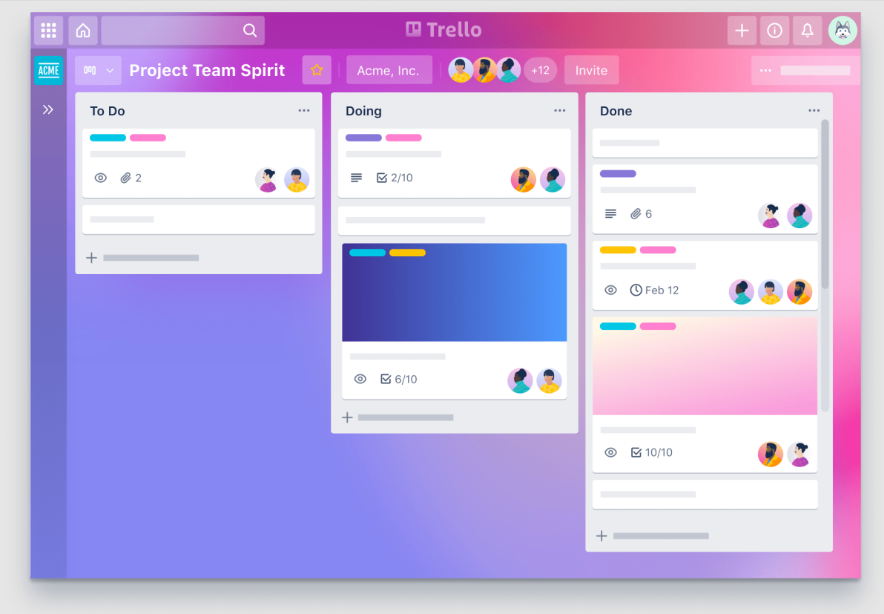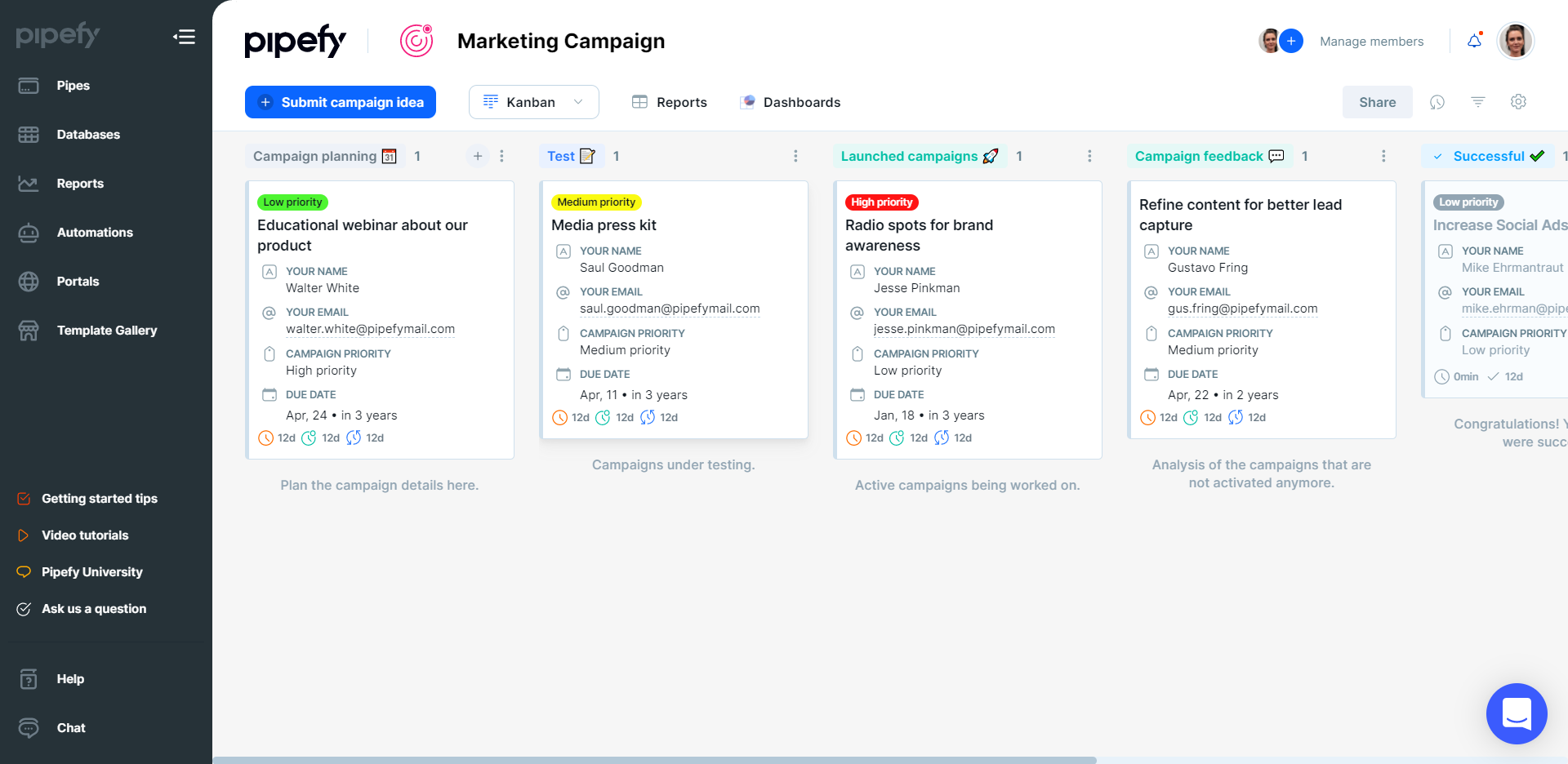In any professionally run, competitive organization, there are clearly defined processes for every step, transaction, and procedure, to ensure that projects are executed efficiently. Processes exist for every transaction, right from getting a leave approved, a budget sanctioned, a feature introduced, or a customer onboarded. However, to make sure these processes are followed seamlessly and efficiently process improvement tools are required.
What is process improvement?
Process improvement methods encompass a range of approaches that aim to identify, analyze, and implement changes to boost operational efficiency, minimize loss, and improve overall quality and performance. Process improvement tools are software that enables organizations to systematically evaluate their processes and enact effective solutions by providing them with data and insights.
Benefits of Process Improvement
There are multiple benefits to companies investing in process improvement tools. Tools can help streamline operations, minimize loss, and enhance efficiency, fostering organizational growth. They enable data-driven decision-making, optimizing performance, and delivering sustainable benefits all of which improve revenue and profits. Here are some reasons why organizations should invest in process improvement tools:
Identifying inefficiencies
Tools systematically help companies identify bottlenecks, redundancies, and unplanned outages within organizational procedures. Techniques such as Lean Six Sigma and BPMN enable the analysis of workflow identification and elimination of inefficiencies. Providing a structured framework for continuous improvement also helps organizations streamline operations, enhance productivity, and ensure efficient allocation of resources.
Reducing Errors and Defects
Process improvement tools minimize errors and defects by systematically identifying potential pitfalls within operational workflows. Organizations can analyze processes in detail, identify points of failure, and start implementing targeted improvements. Organizations can proactively detect and rectify errors by standardizing processes and incorporating quality control measures, preventing them from propagating through the workflow to the end product.
Optimizing workflows
There are workflow automation process improvement tools that can streamline, optimize, and automate many business processes, which leads to improved efficiency, accuracy, and a marked reduction in defects. They can particularly be used in situations to help you speed up processes and improve the quality of products. It also brings about transparency in departments’ interactions with each other.

Enhancing Visibility
By implementing strategic initiatives and adopting more technology to do the same, you make all transactions, processes followed, and goals achieved transparently. This fosters transparency, efficiency, and innovation. It also makes specific wastages or issues more visible, allowing management to tackle them effectively. All of the above are critical for continuous improvement and achievement of operational excellence.
Enhancing Decision Making
Provide teams with access to accurate data and in-depth analytics, allowing the management to make data-driven decisions. Decisions can be about using lesser or different transport systems, procuring less raw material, or maintaining a smaller inventory—all of which could lead to cost savings and higher profitability. Since it’s usually an informed decision, it leads to more effective problem-solving and strategic planning.
Cost Saving
Process improvement tools make your operations lean, processes more efficient, and improve quality. Once you achieve quality and efficiency, you can easily start reducing wastage in terms of manpower, time, transport, raw material wastage, space and other resources. Some processes point out your systems functioning longer than necessary, eliminating an entire step in your production line, etc., which leads to cost savings.
Empowering Employees
When employees feel involved in initiatives to improve processes, it fosters a culture of continual learning, innovation, and effective problem-solving. Employees who participate actively tend to be more motivated, proactive, and dedicated to realizing organizational objectives. This empowers them to share their ideas and expertise, contributing to positive change. Employees are more confident to do the above with readily available data.
Also Read: Organizational Learning and Collaboration with Knowledge Management
Customer Satisfaction
Process improvement leads to the reduction of errors, variations, defects, and wastage. Organizations must implement quality management techniques and tools to improve the consistency, reliability, and accuracy of their products and services. An increase in quality leads to higher customer satisfaction and a boost in brand loyalty.
Schedule a Demo with Our Experts to Explore Process Improvement with Document360
Book A Demo
Process Improvement Methodologies & Techniques
There are numerous types of process improvement methodologies adopted by organizations depending on the area of business operations they are trying to improve. Each method has multiple tools in the market to implement more seamlessly. Below, we have listed seven types of the most adopted methodologies.
Six Sigma Methodology
Six Sigma methodology aims to minimize variations within a product. Used heavily by manufacturing industries to minimize defects and inconsistencies, it helps improve customer satisfaction. Six Sigma is implemented through two main processes—DMAIC on existing processes and DMADV on new processes.
DMAIC is more analytical, using a fishbone diagram to visualize possible causes of defects. It stands for
- Define: Mention the problem or improvement opportunity and establish the project’s goals.
- Measure: This phase involves data gathering to assess the current process. This includes identifying critical process inputs and outputs and developing measurement plans.
- Analyze: The collected data is then analyzed to identify the root cause of the process issues or variations.
- Improve: This phase aims to generate and implement solutions to address the main cause of the problem and create and evaluate potential ideas to solve it.
- Control: The control phase ensures the sustainability of the new measures being implemented and methods to continue monitoring the process and implementing continuous improvements.
- DMADV follows the first three steps of DMAIC and then introduces the design or redesign of a problematic or new product to get the improvements required.
Standard Work
In Lean Manufacturing, standardized work establishes precise procedures to make products in the safest, easiest, and most effective way based on current technologies. The technique usually requires three elements:
- Takt Time: Rate at which parts or products must be produced to meet customer demand. This includes the number of production cycles required in a day or duration to meet the target.
- Work Sequence: The steps operators and supervisors need to perform within the Takt time in the order in which the steps need to be completed. This again ensures minimal variations and defects in the end product if every step is followed perfectly.
Standard Inventory or In-process stock: The minimum quantity of raw materials required to operate a particular order, ensuring there is no wastage or delays in the production of unavailable raw materials.
Total Quality Management
(TQM) is a customer-centric approach focusing on ongoing improvement. It’s usually used in supply chain management and customer satisfaction projects. It relies on data-driven decision-making and performance metrics, using success metrics to guide process improvements. Some of its popular features include customer focus, involvement of the entire team in the improvements, and commitment to continuous business enhancement through small, adaptive changes. TQM is characterized by its process-oriented focus, seeking to minimize inefficiencies and optimize overall performance.
Plan Do Check Act (PDCA) Cycle
The PDCA cycle is a dynamic problem-solving approach for improving processes and bringing about change. It incorporates a scientific method for quality control and process improvement. The PDCA cycle involves four key steps
- Plan: Identify the problem that needs to be addressed and create a plan to solve the same
- Do: Implement and test the devised plan on a small scale
- Check: Evaluate the outcomes and performance of the test run in the “do” stage
- Act: Based on the results of the trial run, decide whether to implement the change on a large scale
Business Process Management (BPM)
Business Process Management, or BPM, is analyzing and improving business processes. Like any institution, businesses grow and shift over time. Processes that once suited a smaller team may hinder efficiency as the team grows. BPM typically identifies bottlenecks, areas for automation, and strategies to enhance overall effectiveness. The technique comprises five key steps:
- Analyze: Examine existing processes and create a comprehensive map called process mapping.
- Model: Design the process, addressing inefficiencies identified during the analysis.
- Implement: Put the model into action, establishing key success metrics to assess the effectiveness of the changes.
- Monitor: Evaluate the project’s success by tracking improvements in the success metrics from the implementation stage.
- Optimize: Continuously refine and optimize the process, identifying and addressing inefficiencies as the business environment evolves.
Continuous Improvement (Kaizen)
The Japanese philosophy of kaizen supports the continuous improvement model, with the conviction that life should be continuously improved for greater satisfaction and fulfillment. The principle seamlessly extends to the realm of business, where ongoing improvement is synonymous with increased success. Continuous improvement aims to optimize value-generating activities and eliminate any unnecessary loss. Kaizen usually targets three types of loss:
- Muda (loss): Practices that consume resources without adding value
- Mura (unevenness): Overproduction leads to excess products and financial losses.
- Muri (overburden): Excessive strain on resources, such as overworked employees or worn-out machinery.
5 Whys analysis
The 5 Whys analysis is a straightforward process improvement method aimed at identifying the root cause of a particular problem. In this technique, a group of stakeholders involved in failure repeatedly ask, “Why did this go wrong?” about five times until the underlying issue is revealed. The 5 Whys focuses on process errors rather than human error. For example, if a company sees an increase in customer complaints about damage to a product, the analysis may reveal that the problem stems from a lack of stress testing the packaging process and recommending adding a new step in the product launch template.
Also Read: Guide to Improve Healthcare Process
Top 3 process improvement tools
If you want to enhance your organization’s operational efficiency, create process improvement tools that empower your team. We list our top three process improvement tools and delve into how they can elevate your processes and drive organizational excellence.
Document360 – Process documentation tool


Document360 is an online documentation software that helps you create and share step-by-step guides for your employees and customers. You can create process documentation, employee handbooks, standard operating procedures, FAQs, and more. The platform allows you to create interactive documents that contain images, videos, or other forms of media to make your document more robust. Additionally, its advanced text editor simplifies content creation.
Teams can collaborate on documents in real-time by commenting and tagging a team member for review. The platform also allows you to create templates for standardizing the documents. It offers granular access control and permissions to streamline and improve processes. With Document360, you can provide each employee with a personalized dashboard with workflow assignments, review reminders, feedback, and more.
Also Read: Best Process Documentation Software
Reduce errors, and boost productivity with cutting-edge process documentation tool. Give Document360 a try!
GET STARTED



Trello – Project management tool


Trello is a simple, visual project management tool that utilizes boards, lists, and even cards to help teams organize and prioritize their work. Though it looks lightweight at first glance, it’s popular for its flexibility and ease of use. The tool is known to allow powerful process improvements in various projects.
Pipefy – Business Process Automation


Pipefy’s low-code process automation makes it simple for teams to build, optimize, and automate any type of workflow. It does not require the users to have any coding experience. It offers a comprehensive set of features that help refine workflows, eliminate bottlenecks, and provide insightful analytics and real-time visibility into processes. It enables organizations to make data-driven decisions and fosters collaboration among team members.
Conclusion
Integrating process improvement tools is essential for organizations seeking heightened efficiency and effectiveness. From identifying inefficiencies to empowering employees, these tools play a crucial role in continuous improvement. Adopting them can have a transformative impact on streamlining processes and achieving organizational excellence. Embracing tools is no longer a choice but a strategic requirement for evolving businesses.
An intuitive knowledge base software to easily add your content and integrate it with any application. Give Document360 a try!
GET STARTED








